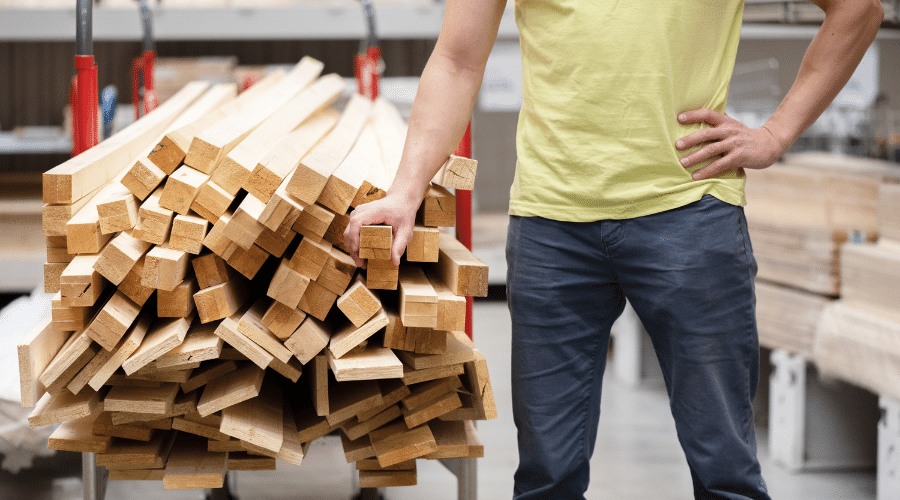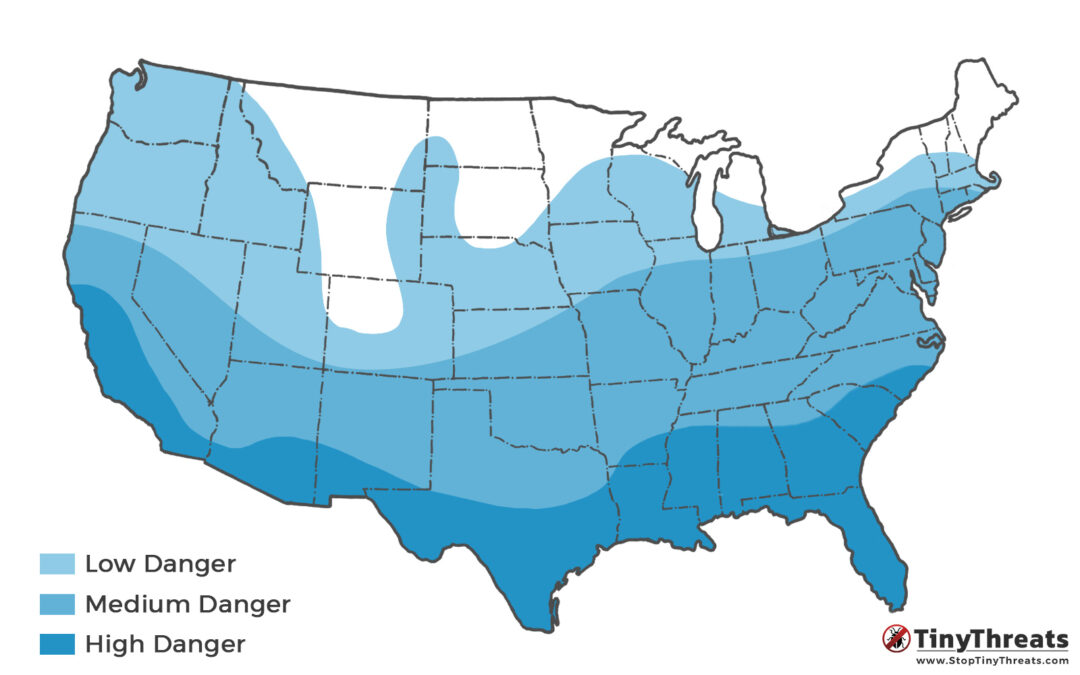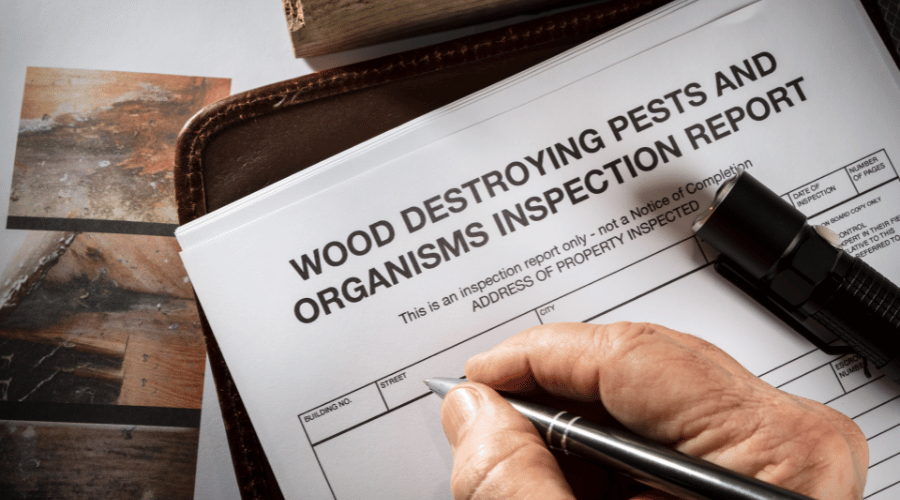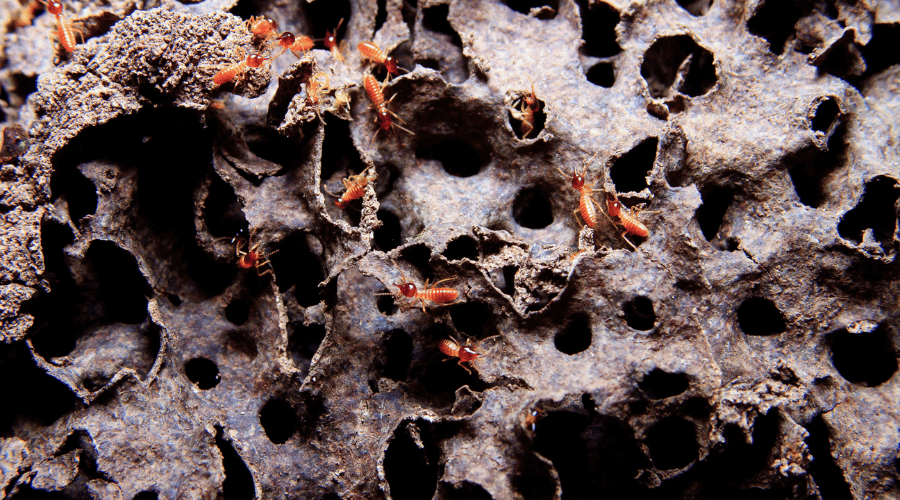Before building a new house or wooden structure, investing in termite-resistant wood can pay off in the long run.
While regular lumber can be destroyed by termites within a year, certain wood species have been shown to last for years with only cosmetic damage.
Ideally, you notice a termite infestation early, preventing any serious damage to your property. However, the right wood will make sure that the termites can’t cause any real harm in the meantime, and save you money on both treatment and damage repair.
But termite-resistant wood is not a magical fix to keep your home safe from termites completely!
Read on to understand the limitations and make the best choice for your project.
Table of Contents
Why Termites avoid certain Wood
Termites dig through wood to eat it – their bodies are uniquely adapted to thrive on the cellulose found in wood. However, termites avoid certain types of wood for various reasons.
The most natural reason is hardwood. Hardwood, also called Heartwood, is at the center of a tree and is the hardest, densest part of the tree. This makes hardwood more difficult for termites to eat, steering them away from it.
Termite-resistant Plywood doesn’t truly exist for that reason: It’s soft, low-density wood with plenty of moisture. The perfect snack for hungry termites.
Another reason why termites avoid certain species of trees is because of the chemicals that these trees secrete. These allelochemicals like glucosinolates, terpenoids, and hydroxamic acids act like pesticides, repelling termites that find this wood.
These chemicals are mostly found in the center of the tree. So if you want to build something termite-proof, hardwood lumber is usually your best option.
Finally, wood can be pressure-treated to repel or kill termites. Common chemicals include borax (also called boric acid), Chromated Copper Arsenate (CCA), Alkaline Copper Quaternary (ACQ), Copper Azole (CA), and Micronized Copper Azole (MCA).
In one study, wood treated with borates (boric acid) and CCA was minimally damaged by termites over a four-year period. In the same experiment, untreated wood was completely destroyed within only one year.
The researchers in the study suggest that naturally termite-resistant wood types are about as resistant to termites as treated wood.
In order to get full protection against termites, choose termite-resistant hardwood that is also pressure-treated.
Wood treated with such chemicals can retain its resistance for about 10-20 years, making it a solid long-term investment.
Treated wood may be more expensive than cheap lumber, but it will pay off if you ever have to deal with termites. If you live in a zone that is affected by termites, this may happen every few years!
Key Takeaways
- Certain species of trees have a core (heartwood) that has a high resistance to termites because of the high density and certain chemicals
- Pressure-treating wood with pesticidal chemicals keeps them protected for 10-20 years
- Protection against termites is not absolute, but will significantly reduce termite damage
List of Termite-Resistant Wood
Many commonly used tree species have high longevity due to their natural resistance to moisture, decay, and termites. Keep in mind that resistance means that termites will avoid this wood and go for other options first, but will eventually dig through this wood, too. Termite resistance does not mean immunity to termites!
Cedar
Cedar trees have certain resins and oils in their wood that seems to be toxic to termites. Because of this, termites will avoid constructions made of cedar.
These attributes make cedar ideal for construction and woodworking, but cedar is also more expensive than many commonly used types of lumber, making it costly to use for home construction.
Additionally, over years, these natural repellants will seep out of the wood, making it more and more vulnerable to termites. This happens much faster when used outdoors – like for a deck, patio, or garden furniture.
Read our full guide about termite-resistant cedar wood!
Teak
Similar to cedar, Teak is a common construction wood that is also termite-resistant. The core, or hardwood, of teak is the part that has termite-repelling properties. The outer parts, the sapwood, will be eaten by termites just the same!
Teak hardwood is another good choice for both indoor and outdoor construction to keep termites away, but it will not stay safe from termites forever!
Like with any other type of wood, buy it pre-treated or treat it yourself to improve its longevity and protection against termite damage. Especially for bigger structures like decks and patios, get a professional to inspect for termite damage every few years to be safe.
Read our full guide about termite-resistant teak wood!
Cypress
Cypress has incredible durability because of the natural cypressene – an essential oil found in cypresses. Researchers have even found well-preserved logs of cypresses that are up to 45,000 years old – now that’s long-lasting wood!
Like cedar, the resin in cypress acts like a natural pesticide, keeping wood-eating insects like termites away.
Cypress essential oil, like many essential oils, can be deadly to termites, which is another layer of defense against termite damage.
With a protective finish, cypress is also a good choice for outdoor construction. For example, the massive doors of the Saint Peter’s Church in Rome were made from cypress and lasted over a thousand years before they were replaced!
Read our full guide about termite-resistant cypress wood!
Redwood
Redwood is resistant to termites for another reason: it has less sap compared to other tree species. Termites generally avoid heartwood and focus on the outer parts of the tree, the sapwood. By having less sappy wood, redwood becomes quite unappealing to termites.
Another factor is the tannic acid in redwood, but that is mostly present in the bark. It creates a protective layer against the elements, decay, and even against fires. But unless you use whole trees with bark, you lose this benefit in redwood lumber.
Still, pressure-treated redwood is very attractive and retains a high protection against termites, making it a great choice for construction both indoors and outdoors.
Read our full guide about termite-resistant redwood!
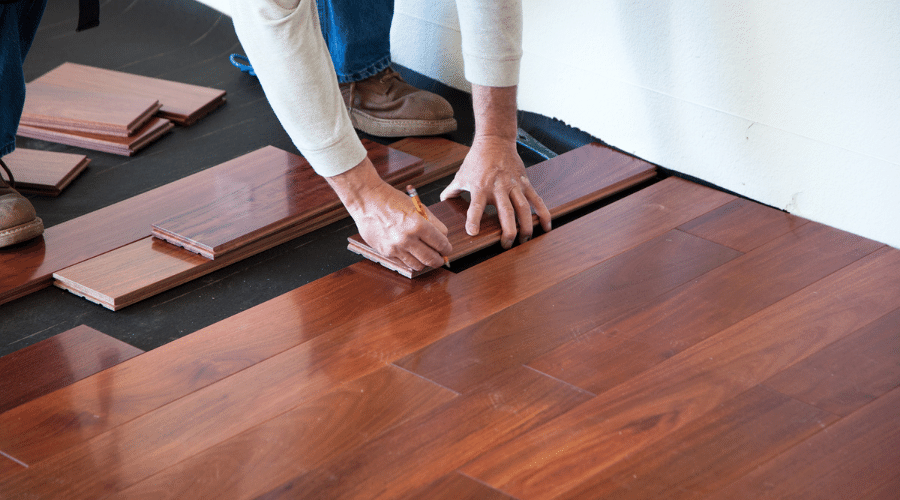
The right hardwood flooring can be both classy and termite-resistant.
Acacia
Acacia is a hardwood that is very resistant to termites due to its dense structure, moisture resistance, and natural built-in pesticide lignin.
Its density makes it more difficult for the termites to chew through than softer wood types, while its moisture-resistance means that it’s less attractive for termites looking for a food source.
Additionally, the lignin in acacia acts as a natural pesticide that makes it less interesting for termites to eat.
While no wood is completely immune to termite damage, acacia is a great option available when it comes to protecting your home from these pests.
Read our full guide about termite-resistant acacia wood!
Mahogany
Mahogany is a highly termite-resistant wood that has been used for centuries in furniture making and home construction due to its impressive durability, tight grain structure, and natural oil content.
These properties make it less inviting to termites than other types of wood, greatly reducing the chances of an infestation. Mahogany’s resilience to wear and tear also makes it an ideal choice for those seeking classically beautiful furniture pieces with long-lasting quality.
All of these attributes make mahogany a favorite among homeowners looking for termite-resistant wood.
Read our full guide about termite-resistant mahogany wood!
Walnut
Walnut wood is known to be naturally termite-resistant due to its ability to repel moisture and its tight grain, which reduces the area of entry for any insects.
It also has a smooth and dense texture which helps protect it from damage over time. Unlike other woods, walnut wood is much more durable and long-lasting, making it a great choice for construction projects or furniture.
Though termites can eventually eat into walnut wood if given the chance, with proper maintenance and care, walnut is an effective way to protect your home from termite damage.
Read our full guide about termite-resistant walnut wood!

Hardwood construction, like this walnut deck, can look beautiful for years – if you use durable, pest-resistant wood and maintain it properly!
Termite wood preference by type
Another important factor is that not all termite species prefer the same kind of wood – different termites eat different wood types!
Subterranean termites are mostly focusing on any outdoor structures near or in the soil, as well as the foundation and bottom parts of a home – as long as there’s wood, of course. They prefer softer springwood and tend to ignore hardwood.
Drywood termites, as the name suggests, prefer eating dry wood. They can be found in walls, floors, attics, and even furniture. Since they enter a home as winged termites during swarm season, they might invade any part of your home and don’t need to work their way up from the soil.
Dampwood termites need wood that has a certain moisture content – preferably decomposing/decaying wood. They are likely found in attics, cellars, or in old wooden structures outdoors.
Effective Termite Treatments to consider
As covered before, termite-resistant wood is no guarantee against termite damage. To improve your odds at keeping your home termite-free, you will have to take additional steps.
Against subterranean termites, bait stations and liquid soil treatment protect against invasions. Make sure to scan the outside of your home and your cellar/crawlspaces for termite trails to spot an infestation early.
To keep drywood and dampwood termites out, you’ll have to make sure that you don’t give them any easy openings during swarm season. Make sure your outside walls are solid and protected by a termite-proof finish. These termites fly around during swarm season in early spring and try to look for cracks in wood to start tunneling in.
Your best option is to talk to a local pest control expert and let them recommend a strategy to prevent termites, and a way to monitor your home for termite activity.
Many homeowners go for an ongoing contract including yearly checkups, often with a guarantee that covers termite treatment and damage if it comes to it.
Common Questions
Why do termites eat wood?
Termites are natural wood decomposers that are uniquely adapted to live on dead wood. Unique bacteria (protozoa) in their guts allow them to digest cellulose and turn it into glucose, their primary energy source.
Since cellulose is one of the core components of most plants and plant materials, termites are very versatile with food sources, but focus mainly on wood.
How long is hardwood resistant to termites?
Natural hardwood is resistant to termites for around 5-10 years, but depending on the wood species, finish, and where it is being used, it can stay termite-proof for up to 20 years.
Pressure-treated wood also keeps its protective properties for up to 20 years when used inside, but will lose its protection faster when exposed to the elements.

